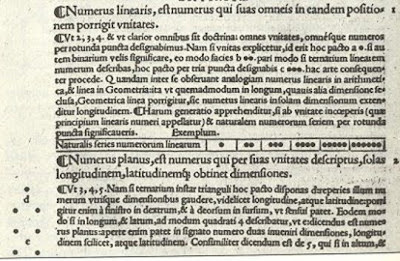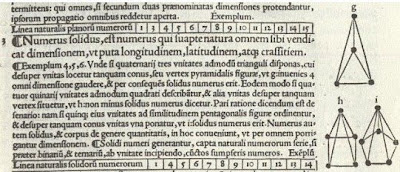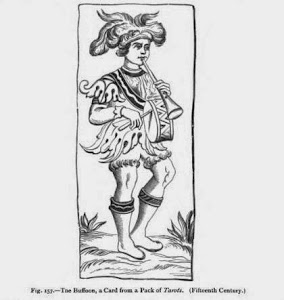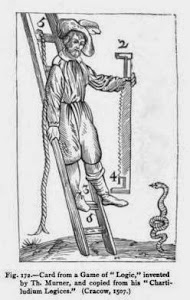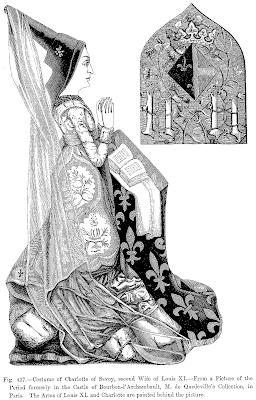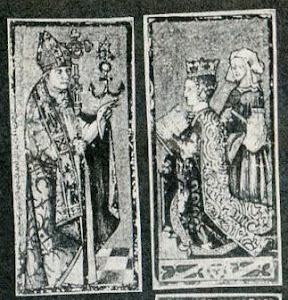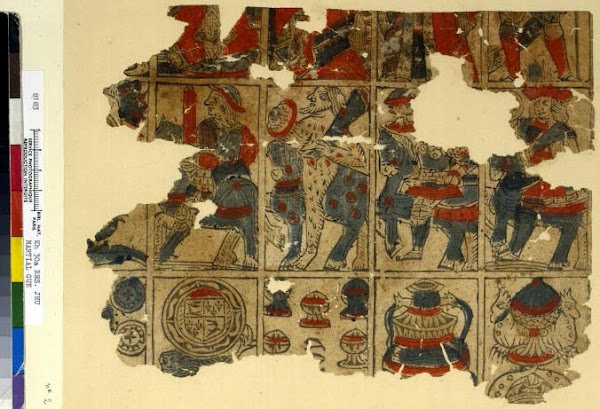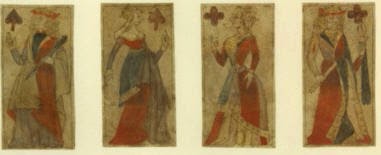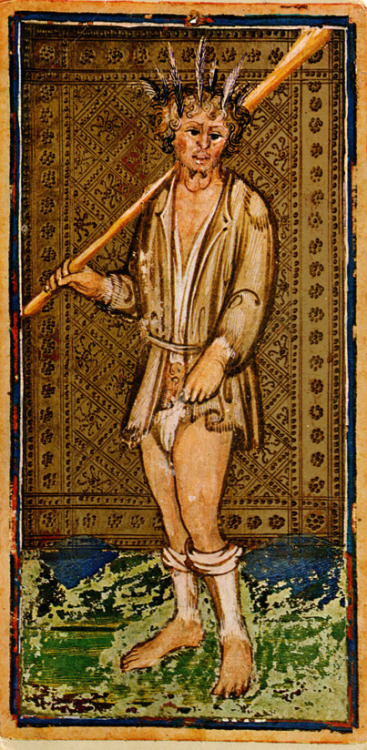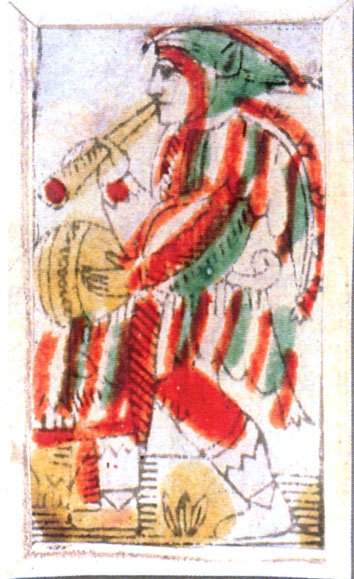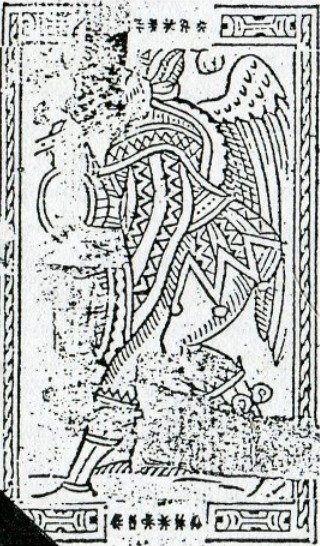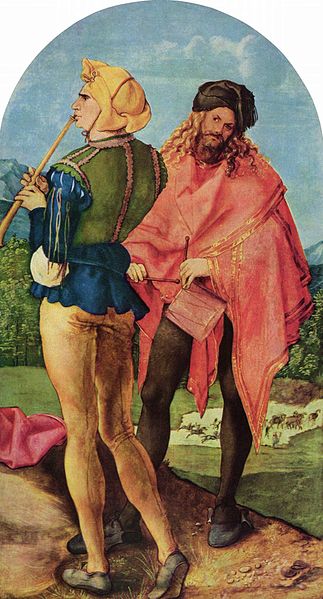And thanks Huck, for the information on Le Hire and how he figured in the symbolism of the cards. Still on the Web today you can find it said that Le Hire invented French suits. It seems to me that he died too early (1443) for that to be likely.
Since I have given Dummett's theory about the origin of French suits (that they developed from the German) I might as well pursue competing theories as to the origin and symbolism of the suit signs. As it happens, they might relate to the earliest names given by Lacroix for associating with the French court cards.
First there is the question of the origin of Italian suits. Lacroix takes a critical swipe at the "savants" (e.g. de Gebelin and de Mellet) who maintain that they denoted "the merchants, who have the money; the priests, who hold the chalice or cup; the peasantry, who handle the staff; and the nobles, who wear the sword". He replies (p. 171):
He seems to be right, at least when I look at comparisons on the web between Mamluk and Italian cards. I would wonder how, given that he had no actual examples of old Muslim cards in front of him (except modern ones), and given the wide variety of suit signs, he could come to that conclusion, but perhaps that was enough.The signs or suits of the numeral cards were fixed upon in the East, and Spain as well as Italy merely adopted them without taking much trouble to penetrate into their allegorical meaning.
But might not these four groups have existed in Muslim society as well? In fact, Lacroix has a theory. The suits are all military in nature: Discussing the various theories he ends up with (p. 169f):
Well, in the absence of evidence one creates theories. His is that chess and card games evolved in a similar military environment. In 1835 he had applied that theory as well to the triumphs (Ross's translation at http://pre-gebelin.blogspot.com/2009/02 ... croix.html):Bullet was still nearer the mark when he recognized offensive arms in "clubs" and "spades" and "defensive" arms in "hearts" and "diamonds." The first were the sword and the lance; the second, the target and the shield.
This isn't bad, although he has left out a few triumphs. It seems to suggest that perhaps triumphs were in Muslim packs first. That idea of course has since been ruled out.The atouts or allegorical cards, which Court de Gébelin tried to explain with the help of the Egyptian theogony, in making them go back to the epoch of the Pharaohs, are merely rather clear emblems of war itself: one sees the virtues necessary for the head of the army, the gods and goddesses which he should invoke, the chariot of triumph, death, the voyage of the soul in the celestial spheres, its judgment and its entry into the next life. As for the kings, the knights, and the knaves or squires, these are those who give themselves to the battle, in the presence of these depicted teachings that the game offers to all, a tutti, as the Italians say to designate the allegorical cards in tarocchi.
Lacroix then has his theory about how the French suit signs were created (p. 164). Although he does not entirely exclude the theory that they were invented by Etienne Vignoles (1390-1443), called Le Hire, his theory is that they were created by Etienne Chevalier (1410-1474), secretary and treasurer to kings Charles VII and Louis XI (http://en.wikipedia.org/wiki/%C3%89tienne_Chevalier). Hearts are named after Jacques Coeur (1395-1456), whose commercial relations with the East brought him the accusation of having "sent arms to the Saracens" and so might have been an importer of Asiatic cards. "Clubs" imitate the heraldic flower of Agnes Sorel (1422-1450), Charles VII's first mistress (whom Coeur was unjustly accused of poisoning); finally, diamonds, "diamonds or arrow-heads", and spades, or swords, "do honour to the two brothers Jean (1390-1463) and Gaspart ( Bureau, grand-masters of artillery in France". Well, it's as good a theory as any.
Added an hour later: checking the French version of the English "diamonds or arrowheads" in the above, I see that it has "carreaux ou fers de flèche" (http://books.google.com/books?id=YFOpbQ ... au&f=false, p. 242). While "fer de fleche" does indeed mean "arrowhead", "carreaux" normally means "tiles" as well as "arrow" or maybe "crossbow", I'm not sure), Also, I should have added the card that illustrates his point, which shows not an arrow but a kind of axe:
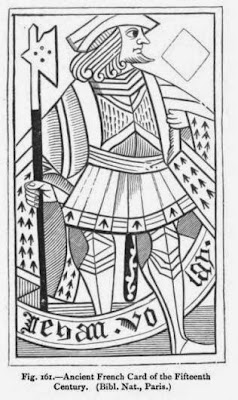
So perhaps he means the iron tip of that kind of weapon. If so, his case is a little stronger than I originally thought, but still a stretch, in that a diamond shape is actually two of these triangles. But perhaps the triangular point was one half of a diamond, the other half affixed to the pole in three points.
This theory has diamonds as a weapon, like Batons, rather than as representing wealth, like Coins (or happiness, both of which came to Sorel until she died). Jean Bureau's first appointment was as "governor of the French archers", and even after cannon were his main weapon, he used archers to protect them from capture (http://en.wikipedia.org/wiki/Jean_Bureau/) But it's a stretch to make arrowheads into diamonds [added: unless their metal was diamond shaped]. (Incidentally, it seems to have been the Bureau brothers' advances in the use of cannons, developed to counter the English longbows, that ultimately resulted in such terrible destruction later in Italy.)
The other theory he mentions, that of Menestrier (who identified the "Charles VI" as made by Gringonneur) is that the "carreaux" (literally tiles, corresponding to diamonds) are named for the floor-tiles of the citizens (i.e. the bourgeois), clubs for the laborers, "piques" (lances), for the military ("epees") and hearts for the clergy's choirs ("choeur"). In this theory, the "tiles" are at least the right shape.
Another theory, as I recall (but I can't find on the Internet currently), is that the suit of Trefles (clover) comes from a design inside the coins on some Italian cards, and the diamond-shaped Carreaux (tiles) or comes from the shape made by the intersections of batons on some Italian cards, which resembled tiles. Piques and Coeurs (the latter by then symbolizing love) would then presumably be the French equivalents of Swords (this last rather obvious from the French pique and Spanish espada = spade) and Cups, but their designs would have been taken from the German suit-signs for Leaves (which suggests a spade) and Hearts (both for love). This theory is consistent with Lacroix's view that Carreaux originally derived from a weapon.
Oddly enough, this theory is also consistent with de Gebelin's, de Mellet's, and Etteilla's identification of the French suit of Carreaux with tarot's Batons, and the French suit of Trefles with Coins. If, as de Gebelin's and de Mellet's wording suggests, they are merely describing existing cartomantic practice rather than inventing a theory, this practice is evidence for the derivation as described, and vice versa. Here is de Mellet (http://www.tarotpedia.com/wiki/Recherch ... les_Tarots):
This theory is also consistent with the early words on the court cards as described by Lacroix. The King of Trefles is called Sans Souci, without worries; this makes more sense as Coins than as Batons. However this lack of worries is illusory, as the title of the Queen of Trefles, Tromperie, suggests. Since in fact Jacques Coeur was very rich until falsely accused of poisoning Agnes Sorel, when the King dispossessed him of everything (see http://en.wikipedia.org/wiki/Jacques_Coeur), the theory is consistent with Lacroix's observations of the names on the cards (although not with his theory of whom they represented). It also makes sense that the King of Carreaux would be a Saracen warrior (batons as a weapon), and the Queen of Carreaux would be Joan of Arc. Money doesn't fit as well.Nos Diseurs de bonne-fortune ne sachant pas lire les Hiéroglyphes, en ont soustrait tous les Tableaux & change jusqu'aux noms de coupe, de bâton, de denier & d'épée, dont ils ne connoissoient ni l'etynologie, ni l'expression; ils ont substitué ceux de coeur, de carreau, de trefle & de pique.
(Our tellers of good-fortune not knowing how to read hieroglyphics, withdrew all the images and changed the names of cups, batons, denier & swords, while understanding neither the etymology nor the expression; substituting hearts, diamonds, clubs & spades. ...)
However there are also many associations of the suit of Carreaux with wealth, no doubt because of the diamond shape, and the English term "diamond". Also, in some games the red cards are ranked one way and the black cards the other way. But piquet, the most popular French card game, does not work that way, according to Wikipedia. So the original inspiration, on this theory, would have been largely forgotten, except in some cartomantic interpretations.
Note: an hour later, I added another comment to my discussion above of Lacroix's "arrowhead".

